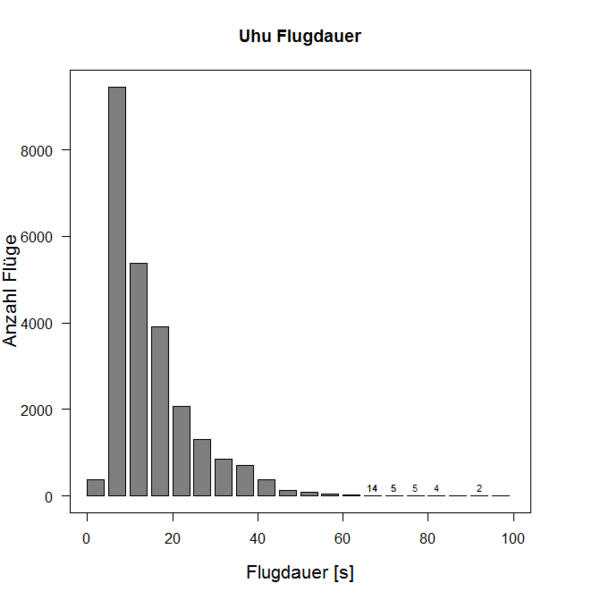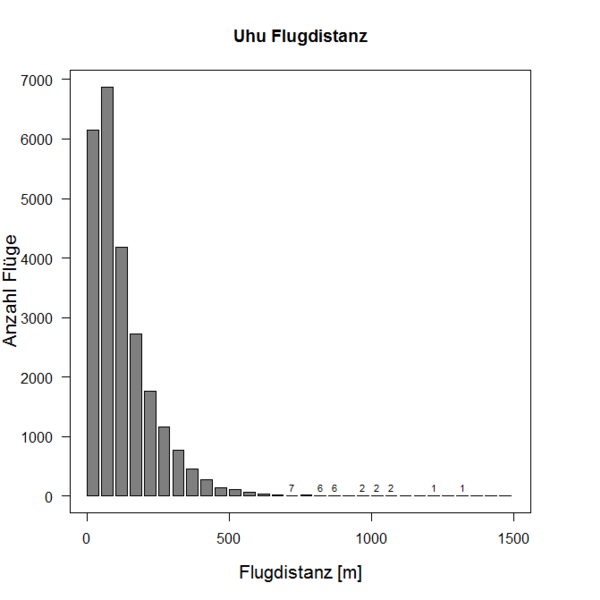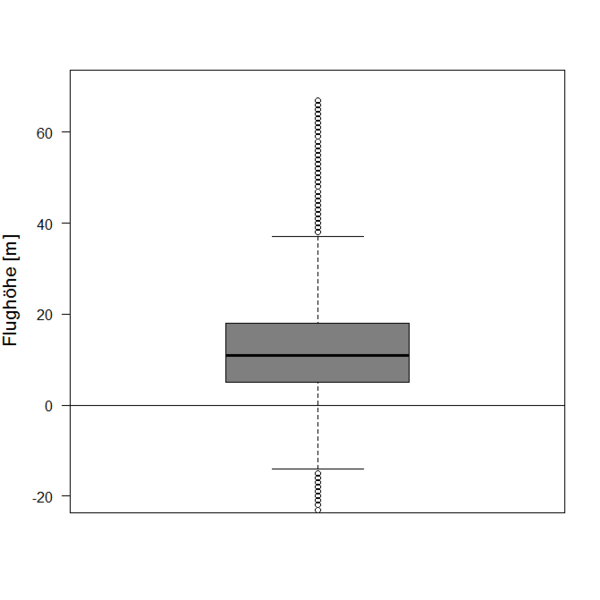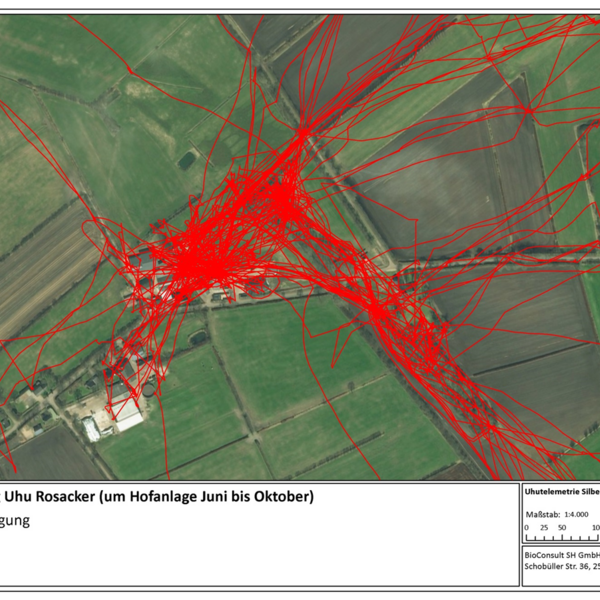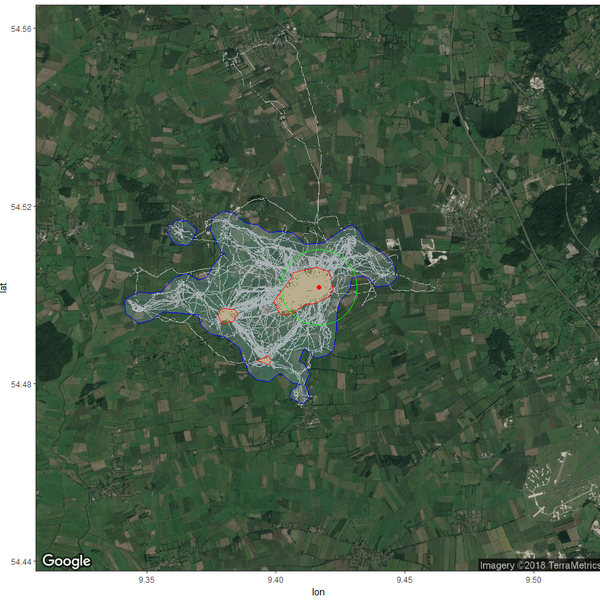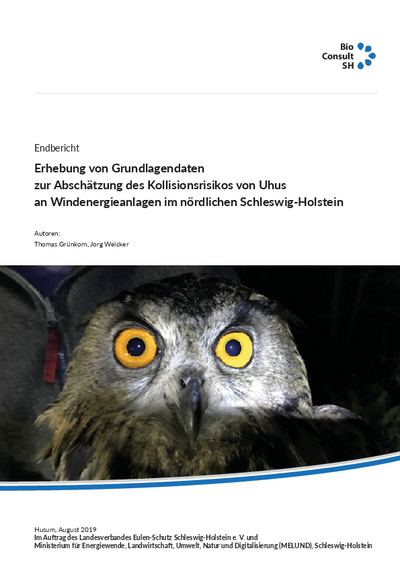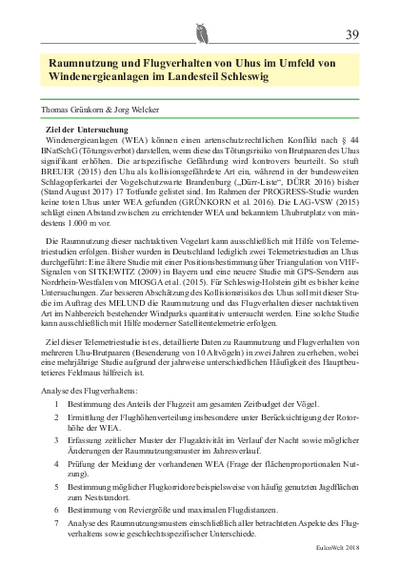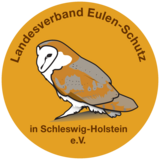Telemetric monitoring of eagle owls
The present study used modern GPS telemetry to collect detailed data on habitat use and flight behaviour of eagle owls in the northern part of Schleswig-Holstein, Southern Schleswig.
How dangerous are wind turbines for eagle owls?
The construction and operation of wind turbines may conflict with the provisions of § 44 (1)1. of the Federal Nature Conservation Act (prohibition to kill), if these significantly increase the risk of killing specially protected species.
The risk that eagle owls (Bubo bubo), which are found almost everywhere in Schleswig-Holstein with an estimated number of 400 breeding pairs, collide with wind turbines is assessed differently. However, the low number of documented collision victims of this species throughout Germany indicates a low risk.
Project objectives
Aim of this telemetry study was to provide a more accurate estimate of the risk for eagle owls to collide with wind turbines. Habitat use and flight behaviour of the nocturnal eagle owl near existing wind farms were investigated using modern satellite telemetry systems. The study was the first of its kind in Schleswig-Holstein.
Methods
Special GPS/GSM transmitters were programmed to record one GPS location per hour during the day and two GPS locations per hour at night. An acceleration sensor allowed detecting flight movements that were recorded at a resolution of one GPS location per second resulting in high resolution, three-dimensional recordings of the flight. Data was transmitted once per day and could be accessed online.
Overall 10 eagle owls (five female and five male birds) were successfully tagged in 2017 and 2018.
Decisive for the choice of these eagle owls was spatial vicinity of the eagle owl territories to wind farms. At two of the breeding sites, 12 wind turbines are located within the area of possible impact (1 km) and about 60 wind turbines in the range of verification for feeding sites (4 km).
Results
- The investigated eagle owls had a territory size (95 % kernel home range) of on average 13.9 km2 (range 5.5–20.8 km2).
- Eagle owls moved up to a maximum of 1.7 km per night away from the nest covering a total distance of on average 6.2 km. The proportion of flight activity within a distance of 1 km around the nesting site, the recommended minimum distance for wind energy planning, was on average 56.3 %.
- The overall flight activity of the eagle owls was low. Only about 0.9 % of the time was spent in flight. This corresponds to less than a quarter of an hour per day.
- The results of this study give no indication of avoidance behaviour of eagle owls towards wind turbines. This results in a potential fundamental risk of collision. How far eagle owls show smallest scale avoidance behaviour could not be determined based on the data available so far.
- The tracked flights were short (median 12 s; max. 108.5 s) and the travelled distance correspondingly small (median 94 m; max. 1,620 m).
- Evaluation of flight heights showed that eagle owls mainly fly low above the ground. The median flight height of all individuals equalled only 10.9 m. Only 8.5 % and 3.3 % of the flight locations were recorded at heights above 30 m or 40 m, respectively. These are important findings in an assessment of the collision risk.
- Farms are specifically approached. This may be due to corn silage and animal sheds attracting rats.
- The population density of eagle owls and the size of home ranges result in an area-wide presence of eagle owls throughout the study area. This is particularly interesting with regard to predation of common buzzards in the same area.
Papers and reports
Erhebung von Grundlagendaten zur Abschätzung des Kollisionsrisikos von Uhus an Windenergieanlagen im nördlichen Schleswig-Holstein
Endbericht im Auftrag des Landesverbandes Eulen-Schutz Schleswig-Holstein e.V. und Ministerium für Energiewende, Landwirtschaft, Umwelt, Natur und Digitalisierung (MELUND), Schleswig-Holstein


